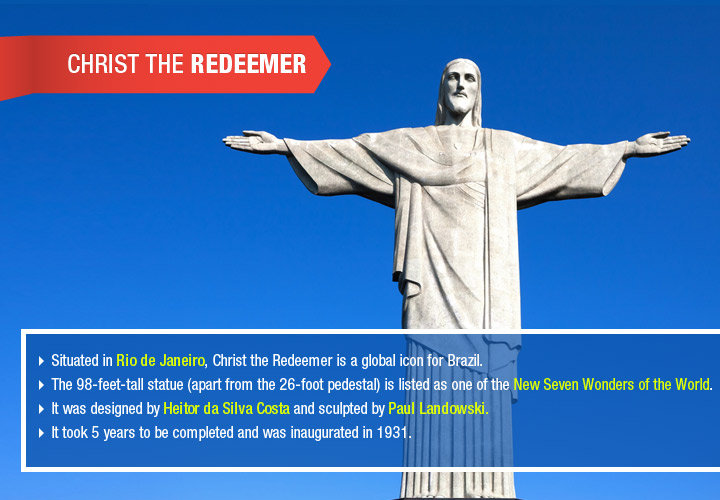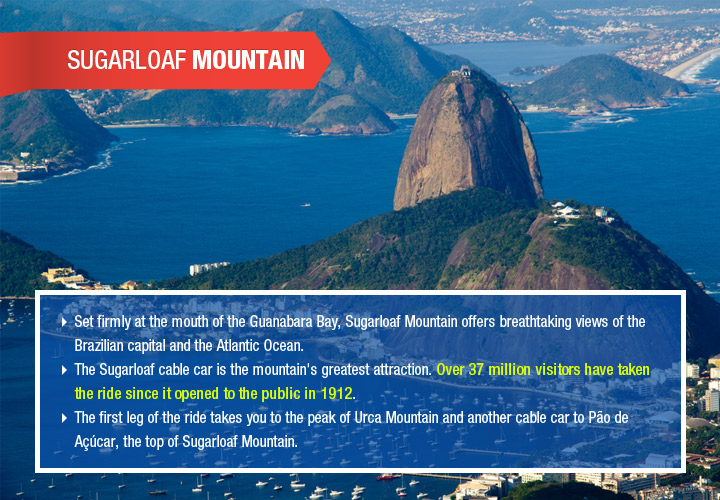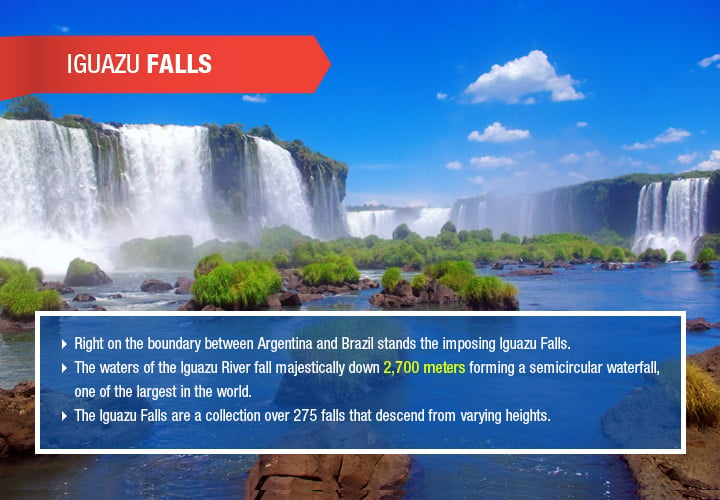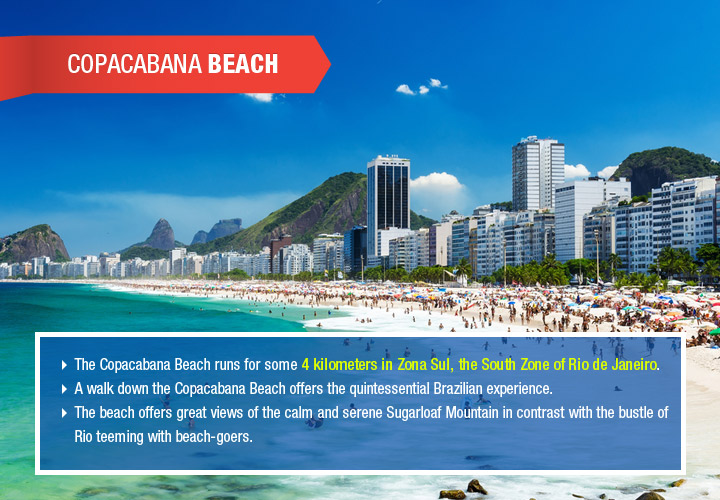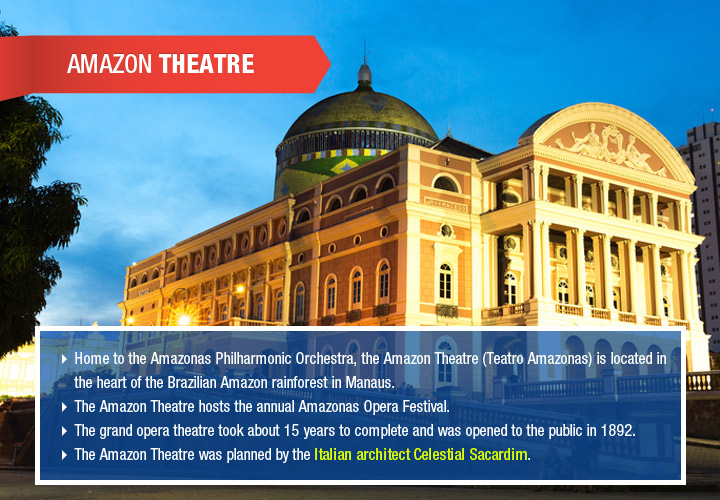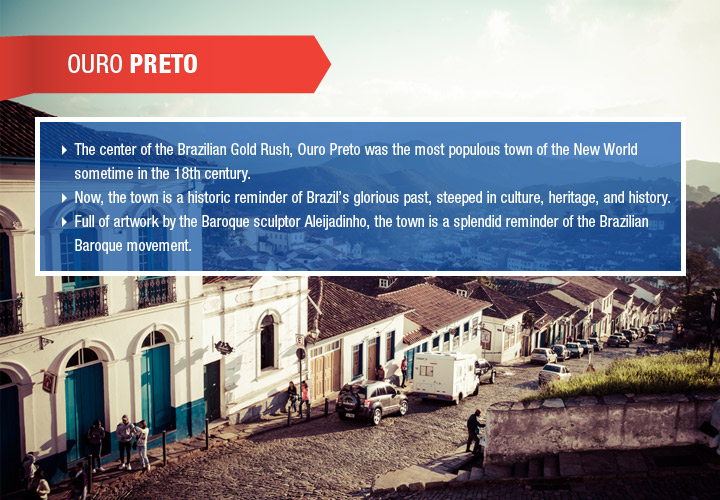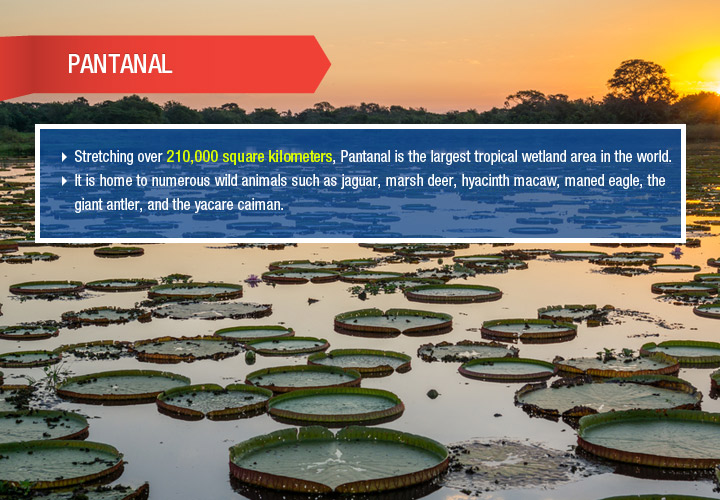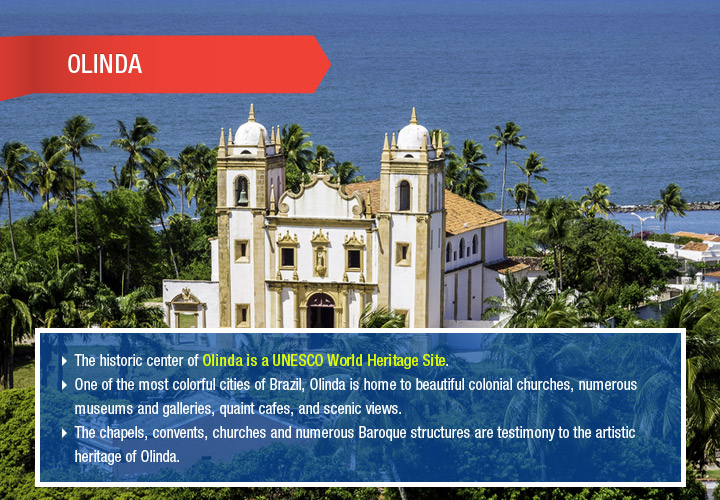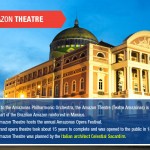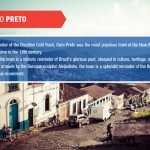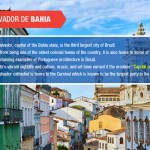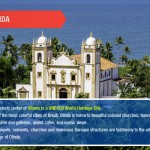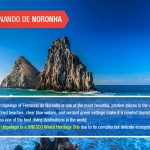Christ the Redeemer
Christ the Redeemer is the global icon for not just Rio de Janeiro but even for Brazil. This 98 feet tall statue (apart from the 26 feet tall pedestal) is one of the most prominent symbols of Christianity in the world and is also listed as one of the New Seven Wonders of the World. Designed by Heitor da Silva Costa and sculpted by Paul Landowski, this gigantic statue of Christ stands, arms outstretched, atop the Corcovado mountain looking over the Brazilian capital. It took 5 years to be completed and was inaugurated 1931.
Sugarloaf Mountain
Sugarloaf Mountain is the other great attraction of Rio de Janeiro. Set firmly at the mouth of the Guanabara Bay, the mountain is best known for offering breathtaking views of the Brazilian capital and the Atlantic Ocean. The Sugarloaf cable car is the mountain’s greatest attraction and over 37 million visitors have taken the ride since it opened up to the public in 1912. The first leg of the ride takes you to the peak of Urca Mountain and another cable car to Pão de Açúcar, the top of the Sugarloaf Mountain. Tourists also prefer to trek up savoring the incredible sights.
Iguazu Falls
Right on the boundary between Argentina and Brazil stands the imposing Iguazu Falls. The waters of the Iguazu River fall majestically down from 60 to 80 meters height with a width of 2,700 meters forming a semicircular waterfall, one of the largest in the world. In fact, the Iguazu Falls are not one but a collection over over 275 falls that fall from varying heights. The subtropical rainforests that make up two National Parks around the Iguazu Falls are home to hundreds of species of wildlife and plants. The Iguazu Falls are a spectacular sight and one of Brazil’s top places to visit.
Copacabana Beach
The Copacabana beach is one of the most spectacular sandy beaches in the world. The beach runs for some 4 kilometers in Zona Sul, the South Zone of Rio de Janeiro. A walk down the Copacabana Beach offers the quintessential Brazilian experience – the perfect marriage of the sun, the surf, sand art, kids playing soccer and volleyball, numerous cafes, street vendors, and people enjoying the golden sands. The beach offers great views of the calm and serene Sugarloaf Mountain in contrast with the bustle by the beach.
Amazon Theatre
Home to the Amazonas Philharmonic Orchestra, the Amazon Theatre (Teatro Amazonas) is one of the best opera houses in the world and is located in the heart of the Brazilian Amazon rainforest in Manaus. The Amazon Theatre hosts the annual Amazonas Opera Festival. Not only is the Amazon Theatre a historical landmark, it is also a cultural icon. The grand opera theatre took about 15 years to complete and was opened to the public in 1896. The Renaissance style building with French furnishings and Italian interiors boasts spectacular interiors and superlative decor. The Amazon Theatre was planned by the Italian architect Celestial Sacardim.
Ouro Preto
Another UNESCO World Heritage Site in Brazil is the Historic Town of Ouro Preto. The center of the Brazilian Gold Rush, Ouro Preto was the most populous town of the New World sometime in the 18th century. Now, the town is a historic reminder of Brazil’s glorious past, steeped in culture, heritage, and history. Full of artwork by the Baroque sculptor Aleijadinho, the town is a splendid reminder of the Brazilian Baroque movement. Ouro Preto is often referred to as the crown among the colonial towns of the state of Minas Gerais.
Salvador de Bahia
São Salvador, capital of the Bahia state, is the third largest city of Brazil. Apart from being one of the oldest colonial towns of the country, it is also home to some of the most stunning examples of Portuguese architecture in Brazil. The city’s vibrant nightlife and culture, music, and art have earned it the moniker “Capital of Joy”. Historic Centre of Salvador de Bahia is a UNESCO World Heritage Site. The Salvador cathedral is home to the Carnival celebration which is known to be the largest party in the world.
Pantanal
One destination in Brazil that you simply cannot miss is the Pantanal marshlands. Pantanal is a coveted destination for wildlife enthusiasts. Stretching over some 200,000 square kilometres, this is the largest tropical wetland area in the world and is home to numerous wild animals and plant species. From the jaguar to marsh deer, hyacinth macaw to maned eagle, the giant antler to yacare caiman, the Pantanal is home to some of the rarest animals, birds, fishes, and reptiles on earth. You may need to hire a boat or small plane to be able to see the Pantanal marshlands.
Olinda
If you cannot imagine Brazil without music, without throbbing live bands and street concerts, do not miss Olinda in Pernambuco. The historic center of Olinda is a UNESCO World Heritage Centre and it is a very vibrant and culturally rich city. One of the most colorful cities of Brazil, Olinda is home to beautiful colonial churches, numerous museums and galleries, quaint cafes, and scenic views. The chapels, convents, churches and numerous Baroque structures are testimony to the artistic heritage of Olinda.
Fernando de Noronha
The archipelago of Fernando de Noronha is one of the most beautiful, pristine places in the world. Virgin beaches, clear blue waters, and verdant green settings make it a coveted tourist destination. It is also one of the best diving destinations in the world. The archipelago is a UNESCO World Heritage Site due to its complex but delicate ecosystem. The national beauty of the islands compares with the best places in the world.
Get to know more about the country through this Brazil Map



